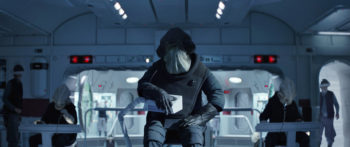Travis P here. We started the discussion of warfare by first looking at basic motivations for war, what essentially causes fighting. Then we followed up with a higher level of causes of war by looking at the types of calculations a nation must make in regard to other nations, especially in relation to balance of power, before deciding to enter a war.
But when a nation goes to war, what exactly does that mean? It’s helpful here to define warfare itself a bit as broadly as possible, while still making it clear that armed conflict happens at different levels and includes different types of fighting.
The most ancient concepts of warfare really involve two different levels of war–strategy and tactics.
Tactics means how to use combat power in the best way on the battlefield in a single fight or single engagement. Tactics is heavily focused on weapons systems and how to employ them most effectively. Of course issues other than weapons feed into tactics–tactical supply is an issue. Troop training will manifest itself in tactical situations. Tactical situations also require troop movement and the ability for units to communicate with one another.
Strategy is the use of combat power at a national level, looking at all the forces a nation can muster. Strategic considerations are thoughts a ruler could have such as, “How can I make my enemy surrender? How will I keep my troops fed all winter? Where will I get new troops next year? How can I leverage my alliances to help me get draw the enemy from a key mountain pass I need to take?” Things like that.
While the strategic level of thought about war is by nature focused less on weapons systems than the tactical level is, weapons systems still matter. Though strategic considerations of what a good weapon system is may be quite different from a tactical level analysis.
For example, during World War II, the German Army’s Tiger tanks were far superior to the US Sherman tank at the tactical level. They had better armor, a better gun, well-trained crews, and an excellent communication system. They were very deadly to Sherman tanks–US tankers dreaded going up against Tigers.
However, at a strategic level, the Tiger was a terrible tank. It took much more time to produce than a Sherman tank; it also required more maintenance, and used more fuel. The US could produce and supply five Shermans for the cost of one Tiger–and while a Tiger tank was better than a Sherman, it wasn’t five times better. The United States Army overwhelmed the Germany Army with sheer numbers as a result (though most armies try to build weapons which are effective both at the tactical and the strategic level).
Modern warfare has defined a third level of warfare, the operational level. Operations develop campaigns–note a campaign is a series of engagements linked together. At the operational level, military planners assign specific units to specific missions that fall in line with the national strategic plan. This is where generals and admirals and other senior military personnel work most of the time in a modern military. (As opposed to the top leaders of government, who in modern democracies are civilians, who are in charge of the strategic level of warfare.)
Note that the strategic, operational, and tactical levels of warfare can be used to talk about nearly everything that happens in a war. Tactical communication is focused on the radio in a soldier’s hand–at the operational level communication concerns how separate units get in touch with one another, whereas a strategic look at communications would look at how the entire military communicates–such as by satellite systems. Tactical supply might be the amount of ammo in the back of a military truck; operational might be supply depots, a system of trucks, and routes and movement, while strategic could be movement of ships from the home country to ports in a distant country, national rail assets, national food production, etc.
You may have heard nuclear weapons called “strategic weapons” and the reason why is that even a single “ordinary” nuclear weapon affects an entire country at the national level. While there have been efforts to develop extra-small “tactical nuclear weapons” (which might be used to destroy, say, a single aircraft carrier), generally speaking, nuclear weapons form a special case in which a type of warfare really only exists at the strategic level. There is one nominal outcome. With nukes, there are no campaigns for operations to be involved with and no specific engagements to win. Not in our current world.
By talking about nuclear warfare, we’ve slipped into talking about warfare types. Though there are many different types of warfare that can’t really be given full consideration until we talk a bit about the psychology of war. But for now, let’s look at some types of war through the lens of the levels of war, as we already did with nuclear weapons.
Worth mentioning first because it helps make the difference between strategic and tactical levels even clearer is aerial bombing. A single aircraft (or a few) dropping bombs to help a ground unit defeat an enemy in an engagement is the use of tactical bombing. The type of bombing that happened in WWII, where hundreds of bombers would go out and destroy entire cities to reduce enemy industry nationwide were examples of strategic bombing.
The operational level of war becomes king during maneuver warfare, which is where armies attempt to take valuable terrain and supplies behind enemy lines (i.e., maneuver to gain an advantage). Maneuver warfare also seeks to destroy an enemy’s willingness to fight by separating them from what they need to win the war. Operational planning is vital to maneuver warfare–oh, of course tactics and strategy also matter, but maneuver war is won and lost with the kinds of plans that top commanders develop and execute. Think Erwin Rommel or George S. Patton.
A war of attrition, in contrast to maneuver war, is where opposing armies seek to destroy their enemy’s ability to fight with greater numbers. This is how zombies fight–or in far too many science fiction movies, aliens. It’s also happened in the real world. In World War I, a great deal of attrition warfare happened, a specific example being when German commanders decided that the way to break the stalemate on the Western Front was to send so many troops at Verdun that the French would be “bled white.” The plan didn’t work, though it did kill about 150,000 soldiers on each side of the fight.
In ancient and Medieval times, the siege of a city qualified as attrition warfare. Sun Tzu recommended against besieging cities, by the way (The Art of War book 3, 3-4)–and in fact, most military commanders would agree with the idea that attrition warfare is best avoided, except as a last resort. Note though if used, a war of attrition will usually be won for strategic reasons, i.e. who can afford to lose the most troops.
A form of warfare that’s quite different from a war of attrition is a guerrilla war. Guerrilla means “little war” in Spanish and the term developed after Napoleon’s France invaded Spain (1807-1814). Spanish guerrillas (and those who fight like them since then), who were more often than not civilians, employed hit-and-run tactics, seeking to keep larger forces off-balance, and won not by eliminating the enemy’s ability to keep fighting, but by making the enemy’s presence so costly that they were unable to stay.
This kind of war is more commonly called “Asymmetric Warfare” in modern military terminology (because the two sides of the conflict don’t have equal or symmetric power) and is closely related to a war of revolution or a counter-insurgency. The still-ongoing war the USA has in Afghanistan is this type of war. In this kind of war, all the fighting happens at the tactical level, since there are no masses of enemy forces to maneuver around operationally and there are no centers of industry to bomb strategically. Yet while all the fighting in a guerrilla or asymmetric war happens at the tactical level, the decision of the more powerful opponent to leave or go is actually a strategic decision.
Note there are many other types of warfare, from cyberwar to chemical war to psychological war and numerous others. Yet by talking about the basics we hope to impart an understanding that war happens at different levels, with different considerations at each level. And that different types of warfare have particular strengths and weaknesses across the different levels of war.
Travis C here to continue the discussion. As Travis P opens this topic, we see three common levels that we describe warfare: strategic, operational, and tactical. We also describe several types, or “flavors”, that you as an author might want to consider, and as a reader you may encounter. To some degree, every story that involves war has these three levels playing in the background. You may not see it, may not need to show it, but the big gear is turning the little gear all the way down.
For this week, I want to analyze the Star Wars story world through the lense of one particular movie, Rogue One. We should be able to show a wide variety of levels and types all in one compact unit, with the advantage of knowing the broader story. For anyone who hasn’t followed Jyn Erso’s story, be forewarned… spoilers follow.
Rogue One tells the story of how the Rebels gained the technical plans for the Death Star, the Empire’s ultimate planet-killing weapon system. Jyn’s father, a weapons developer turned pacifist, has been taken by the Empire and made to complete the Death Star. The Rebels learn that an Imperial defector knows the location of Galen Erso and has a message for his daughter, and so bring Jyn into the plot. With a trusty band of untrustworthy misfits, she goes to the moon Jehda to learn more.
We see Imperial troops conducting patrols through Jedha City, followed by an extremist group of Rebels who conduct insurgent (or guerrilla) attacks against the Empire. Constabulary duty mixed with insurgents? Beautiful.
We later see the tactics of a small unit attempting to infiltrate the research facility on Eadu, as well as the technical storage vaults on Scarif. Troop movement, calls for fire, aerial support (what we call close air support), and employment of various tactical weapon systems are all on display.
 |
| Tactical Action from Rogue 1 |
While we witness several convenings of the Rebel leadership, military and civilian, it’s on Scarif we also see the operational level of war play out. While the Rebel leaders debate what actions to take since learning the Death Star is operational, the Admiral Raddus deploys the fleet to Scarif to aid Jyn’s party and attempt to take down the Empire forever. Movements of this type, especially when supporting major vessel-on-vessel action while maintaining support to ground operations, are good examples of seeing the operational level in play. Multiple missions on-going, largely coordinated (or at least monitored) by a central command station.
 |
| Operational Level in Rogue 1--fleet command |
While chronologically we must wait for Episode IV, A New Hope, to see the plot run to fruition, the foreshadowing of the Death Star’s defeat leaves us on a high note.
For science fiction authors, you’ll always be in good shape to begin from the three major levels and derive your campaign actions from there. Certainly you will have technologies more advanced than today’s modern standards, but you can probably find a relative place for them at the strategic, operational, or tactical level. A recent example I’m reading is John Ringo and David Weber’s March Upcountry. What happens when every junior Marine has a kiloton-sized explosive projectile at their disposal?
 |
| The Death Star--a strategic weapon |
Next week we’ll pick this topic up again as we introduce a spectrum of conflict and a progression, or escalation, of war. We’ll have the opportunity to demonstrate the shades of gray that lie between the simple levels and types described here.

Comments
Post a Comment